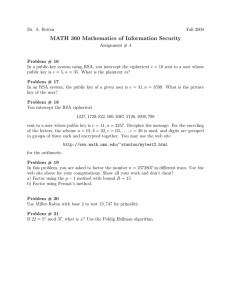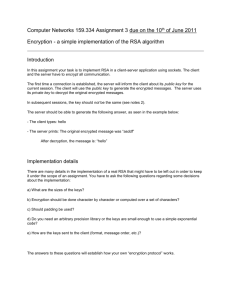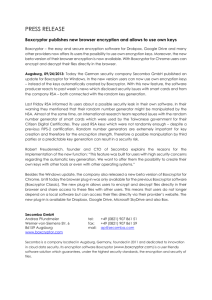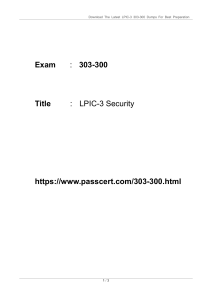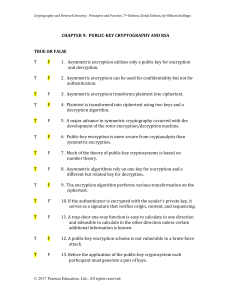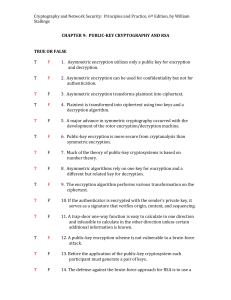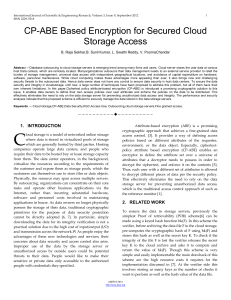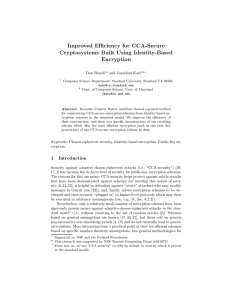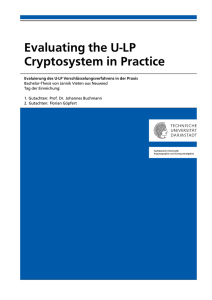Introduction to Cryptography Summer ’01 Homework #5 Assigned: Thursday, 7/12/01 Due: Tuesday, 7/24/01
advertisement
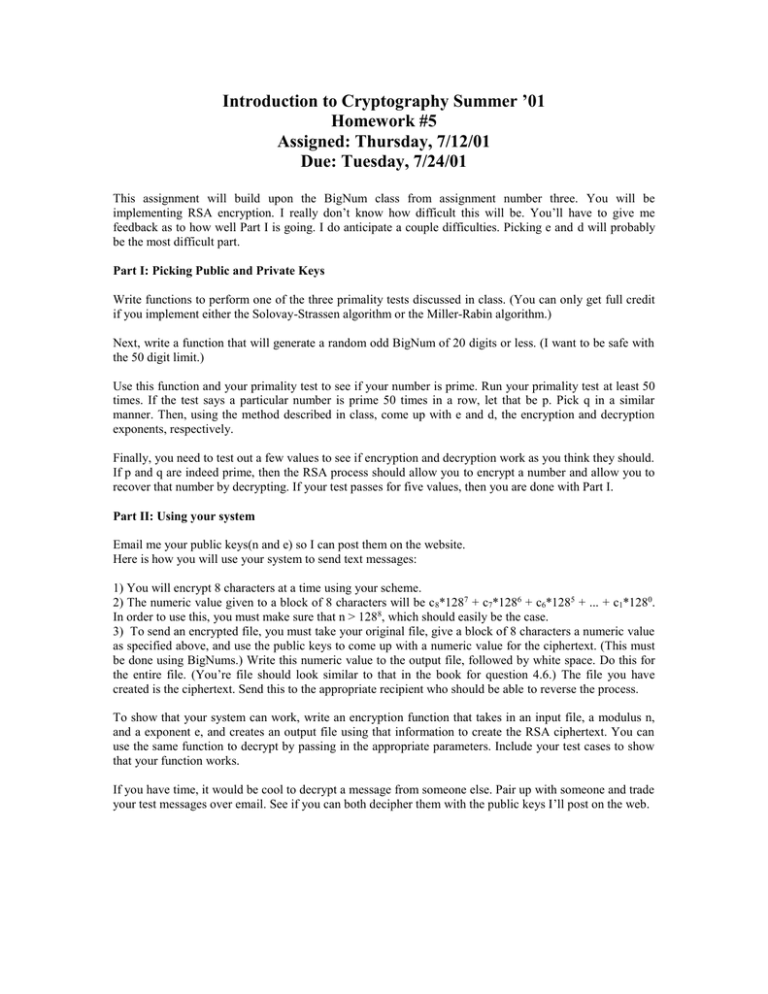
Introduction to Cryptography Summer ’01 Homework #5 Assigned: Thursday, 7/12/01 Due: Tuesday, 7/24/01 This assignment will build upon the BigNum class from assignment number three. You will be implementing RSA encryption. I really don’t know how difficult this will be. You’ll have to give me feedback as to how well Part I is going. I do anticipate a couple difficulties. Picking e and d will probably be the most difficult part. Part I: Picking Public and Private Keys Write functions to perform one of the three primality tests discussed in class. (You can only get full credit if you implement either the Solovay-Strassen algorithm or the Miller-Rabin algorithm.) Next, write a function that will generate a random odd BigNum of 20 digits or less. (I want to be safe with the 50 digit limit.) Use this function and your primality test to see if your number is prime. Run your primality test at least 50 times. If the test says a particular number is prime 50 times in a row, let that be p. Pick q in a similar manner. Then, using the method described in class, come up with e and d, the encryption and decryption exponents, respectively. Finally, you need to test out a few values to see if encryption and decryption work as you think they should. If p and q are indeed prime, then the RSA process should allow you to encrypt a number and allow you to recover that number by decrypting. If your test passes for five values, then you are done with Part I. Part II: Using your system Email me your public keys(n and e) so I can post them on the website. Here is how you will use your system to send text messages: 1) You will encrypt 8 characters at a time using your scheme. 2) The numeric value given to a block of 8 characters will be c 8*1287 + c7*1286 + c6*1285 + ... + c1*1280. In order to use this, you must make sure that n > 1288, which should easily be the case. 3) To send an encrypted file, you must take your original file, give a block of 8 characters a numeric value as specified above, and use the public keys to come up with a numeric value for the ciphertext. (This must be done using BigNums.) Write this numeric value to the output file, followed by white space. Do this for the entire file. (You’re file should look similar to that in the book for question 4.6.) The file you have created is the ciphertext. Send this to the appropriate recipient who should be able to reverse the process. To show that your system can work, write an encryption function that takes in an input file, a modulus n, and a exponent e, and creates an output file using that information to create the RSA ciphertext. You can use the same function to decrypt by passing in the appropriate parameters. Include your test cases to show that your function works. If you have time, it would be cool to decrypt a message from someone else. Pair up with someone and trade your test messages over email. See if you can both decipher them with the public keys I’ll post on the web.
